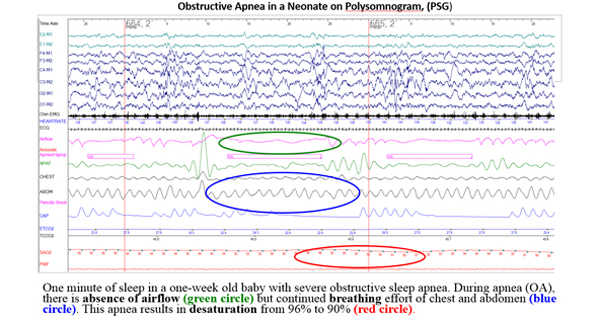Micrognathia-Retrognathia Clinical Pathway — N/IICU and ICU
Sleep Study
Obstructive sleep apnea (OSA) is a condition where repetitive blockages in airflow occur during sleep despite respiratory effort. These are often associated with micro-arousals, awakenings or desaturations. Patients with micrognathia have a high rate of obstruction that is related to the relative size or position of the tongue in the airway. Other airway anomalies may contribute as well.
A polysomnogram is a standard, non-invasive multi-channel tool to assess for OSA. This differs from a pneumogram which is used for apnea of prematurity. A polysomnogram quantifies obstructive and central apnea. Evidence of and severity OSA is determined based on guidelines such as: AHI, O2 requirement, feeding and growth.
It includes:
- EEG to determine sleep stage
- Pulse oximetry
- End-tidal and transcutaneous CO2 monitoring
- Inductance plethysmography to determine chest/abdominal movement, synchrony, among
other parameters

Picture courtesy of Chris Cielo, MD